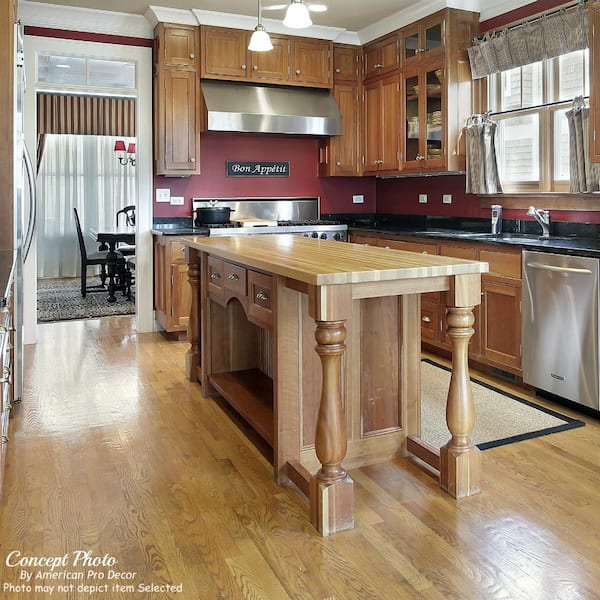Discover Affordable and Chic Solutions in Legs For Kitchen Island Updates
Discover Affordable and Chic Solutions in Legs For Kitchen Island Updates
Blog Article
Vital Elements to Think About When Selecting Legs For Kitchen Island
Choosing the appropriate legs for a kitchen area island involves a cautious assessment of several variables that can substantially affect both functionality and visual appeal. As we check out these components, it becomes clear that each choice can have far-ranging implications for the general cooking area experience.
Material Options
When choosing legs for a cooking area island, understanding the different product options is vital for attaining both aesthetic charm and architectural honesty (Legs For Kitchen Island). The choice of material substantially affects not just the sturdiness of the island yet additionally its overall design and performance
Steel legs, usually made from stainless steel or functioned iron, add a commercial and contemporary feel while guaranteeing sturdiness and stability. These materials are resistant to wear and can sustain significant weight, making them excellent for bigger islands.
One more choice is engineered materials, like MDF or plywood, which can be extra cost-efficient while still supplying a series of finishes. Nonetheless, they may not provide the exact same level of stability as solid wood or steel. Last but not least, materials such as acrylic or glass can produce a modern appearance, though they may require added support to guarantee security.
Inevitably, the choice of material for cooking area island legs ought to align with the preferred functionality and the total style of the kitchen.
Design and Design

When thinking about style, the shape and finish of the legs are vital. Tapered legs can offer a sense of lightness and beauty, while thicker, much more robust legs can convey strength and stability. Additionally, the coating-- be it repainted, tarnished, or all-natural-- must match the cabinets and counter top materials to develop a unified appearance.
In addition, the style of the legs can likewise show personal preference. Personalized or attractive legs, such as those including elaborate carvings or unique geometric forms, can offer as prime focus, adding personality and character to the kitchen area. Ultimately, the appropriate selection will not only boost performance but additionally raise the aesthetic allure, making the cooking area island a standout function of the home.
Height Factors To Consider
Choosing the appropriate height for kitchen island legs is important, as it directly impacts both functionality and convenience. The conventional height for a cooking area island normally ranges from 36 to 42 inches, straightening with typical countertop heights. A 36-inch elevation is suitable for food preparation and food preparation, permitting comfy use cooking area home appliances and devices. On the other hand, an elevation of 42 inches is typically preferred for islands planned for bar seating, fitting taller feceses and using an informal dining experience.

It is likewise vital to account for customers' heights and preferences. Tailoring the height can ensure a comfy experience for all family participants, making the kitchen area island a more useful and satisfying space.
Weight Assistance
Ensuring ample weight support for cooking area island legs is important for both safety and performance. The kitchen island commonly serves several purposes, including food prep work, dining, and added storage, requiring a durable support framework. When selecting legs, it is important to consider the general weight ability required based on the island's planned use and the materials that will certainly be positioned on it.
The option of product for the legs plays a substantial role in their weight-bearing capacities. Solid wood, metal, and heavy-duty composites generally provide premium stamina contrasted to lighter materials. In addition, the layout of the legs-- whether they are right, tapered, or have a pedestal form-- can influence their capacity to disperse weight efficiently throughout the structure.
Constantly get in touch with the manufacturer's specifications concerning load limits to ensure that the legs can sustain the desired weight without endangering safety and security. In recap, choosing kitchen area island link legs with sufficient weight support is essential for developing a secure and useful culinary room.
Setup and Maintenance
Proper installment and upkeep of cooking area island legs are important for making sure durability and stability. To start, it is necessary to comply with the manufacturer's standards during installation. This usually entails protecting the legs to the space station utilizing suitable bolts, making sure that the legs are level and straightened. Using a degree device can help stop wobbling and boost the general visual charm of the kitchen island.
Once set up, normal maintenance is essential to preserve the stability and look of the legs - Legs For Kitchen Island. For wooden legs, regular cleansing with a damp cloth and application of appropriate wood polish can avoid wetness damage and maintain their surface. Steel legs might require a gentle cleansing solution to eliminate oil and gunk, adhered to by a dry fabric to prevent rust formation
Additionally, check the legs consistently for signs of wear or damage, such as cracks or loose joints. Tightening screws or bolts as needed anonymous can also prolong the lifespan of the legs. By adhering to these setup and maintenance practices, property owners can make sure that their kitchen area island stays strong and visually appealing for many years to find.
Final Thought

Aesthetic coherence is vital in picking the design and design of legs for a kitchen island, as these aspects considerably affect the total setting of the space. Tapered legs can provide a sense of lightness and beauty, while thicker, a lot more durable legs can share toughness and security.Picking the ideal elevation for cooking area island legs is crucial, as it directly impacts both functionality and convenience. In recap, picking cooking area island legs with ample weight assistance is essential for developing a secure and useful cooking area.
In final thought, choosing legs for a kitchen island necessitates careful factor to consider of numerous variables, consisting of material options, design, elevation, weight assistance, and setup.
Report this page